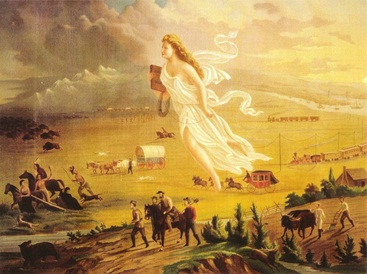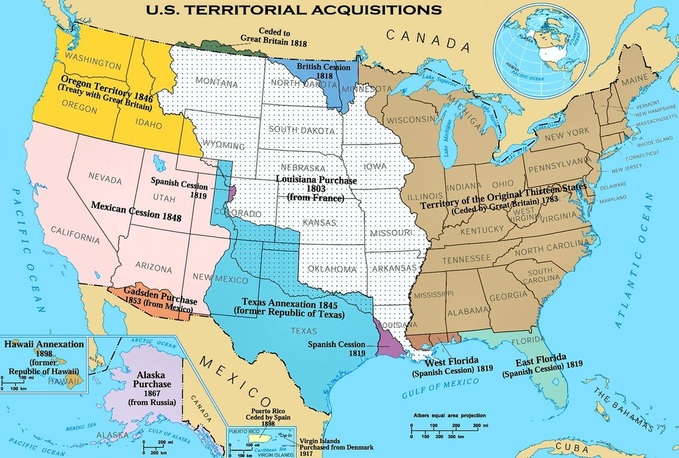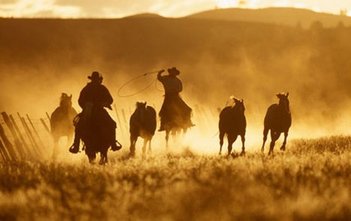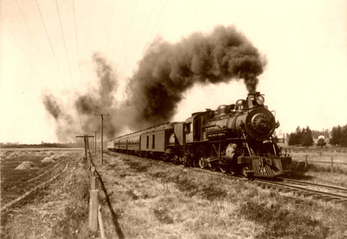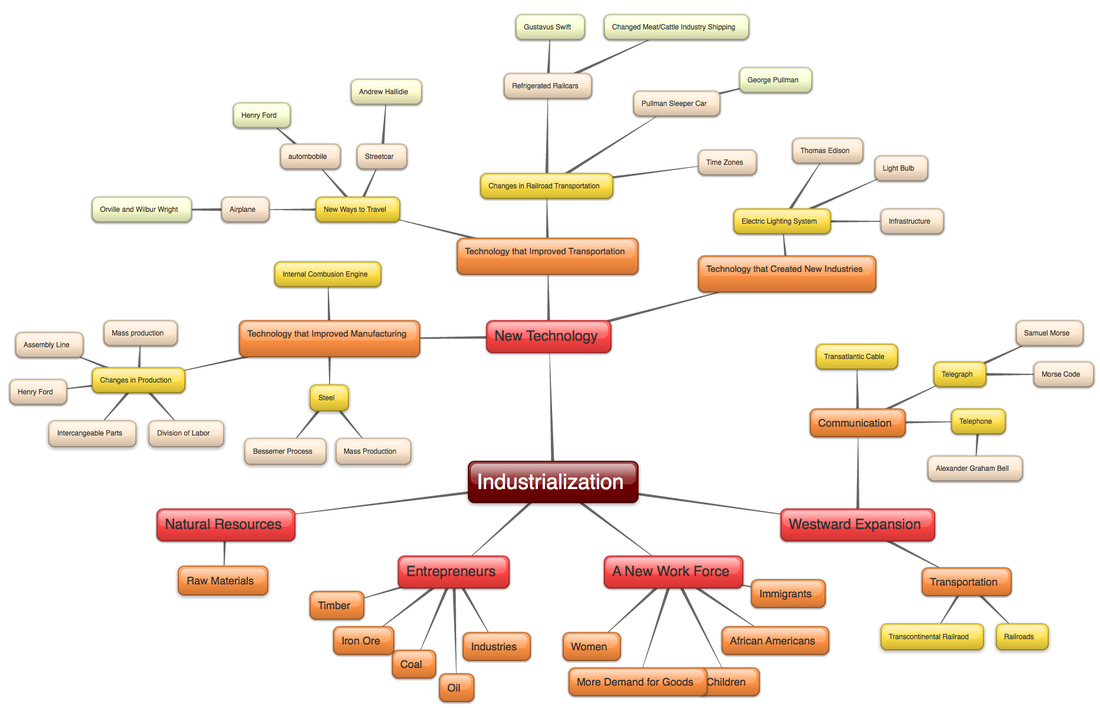The farming industry began with mechanization and one crop farming. Mechanization is the use of machines in farming. One-crop farming is producing large amounts of only one crop. Before farming became an industry, farmers produced many crops in small amounts. They only grew enough for their families or for their communities. As more people left farming, one crop farming helped farmers not not only make a living, but help feed a working nation.
The farming industry got its start when the Homestead Act of 1862 was passed. The Homestead Act was signed into law by President Abraham Lincoln on May 20, 1862. This Act was intended to settle the Great Plains Region of the United States, which was considered to be a "treeless wasteland". Innovations in growing crops allowed industrial farmers to turn this land known as a "treeless wasteland" into the "American Bread Basket".
U.S. Marshals played a big part in building the towns and cities of the West. They served as the law enforcement officers for federal courts, congress, or the president. They enforced federal policies by serving subpoenas, making arrests, and handling and transporting prisoners.
And though these are the most well-known of their tasks, they had numerous others as well, including the disbursement of money. The Marshals paid the fees and expenses of the court clerks, U.S. Attorneys, jurors, and witnesses. They rented the courtrooms and jail space and hired the bailiffs, criers, and janitors. They made sure the prisoners were present, the jurors were available, and the witnesses were on time.
But this was only a part of what the Marshals did. The Marshals have also taken the responsibility for a number of other tasks over the years, such as taking the national census through 1870, distributing Presidential proclamations, registering enemy aliens in times of war, capturing fugitive slaves, and protecting the American borders.
In the second half of the 19th century, the U.S. Marshals became synonymous with the "Wild West" as they made their mark on history in the many lawless frontier towns. In many of these places, the marshals were the only kind of law that was available, and knowing this, numerous outlaws made their livelihoods in these fledgling towns that had not yet become structured enough to provide for their own authorities. Here, in "wicked" places like Deadwood South Dakota;Tombstone, Arizona; and the plains of Indian Territory, U.S. Deputy Marshals became famous as they pursued such notorious outlaws as Billy the Kid in New Mexico; Dalton Gang, Belle Starr, and the Rufus Buck Gang in Indian TerritoryJesse James in the Midwest; and Butch Cassidy's Wild Bunch in Wyoming; and hundreds of others.
And though these are the most well-known of their tasks, they had numerous others as well, including the disbursement of money. The Marshals paid the fees and expenses of the court clerks, U.S. Attorneys, jurors, and witnesses. They rented the courtrooms and jail space and hired the bailiffs, criers, and janitors. They made sure the prisoners were present, the jurors were available, and the witnesses were on time.
But this was only a part of what the Marshals did. The Marshals have also taken the responsibility for a number of other tasks over the years, such as taking the national census through 1870, distributing Presidential proclamations, registering enemy aliens in times of war, capturing fugitive slaves, and protecting the American borders.
In the second half of the 19th century, the U.S. Marshals became synonymous with the "Wild West" as they made their mark on history in the many lawless frontier towns. In many of these places, the marshals were the only kind of law that was available, and knowing this, numerous outlaws made their livelihoods in these fledgling towns that had not yet become structured enough to provide for their own authorities. Here, in "wicked" places like Deadwood South Dakota;Tombstone, Arizona; and the plains of Indian Territory, U.S. Deputy Marshals became famous as they pursued such notorious outlaws as Billy the Kid in New Mexico; Dalton Gang, Belle Starr, and the Rufus Buck Gang in Indian TerritoryJesse James in the Midwest; and Butch Cassidy's Wild Bunch in Wyoming; and hundreds of others.
Unit 1 - The Gilded Age
Topic 1 - Industrialization
Topic 1 - Industrialization
LESSON 1: WESTWARD EXPANSION

Concept Maps are when you categorize the main ideas and important details of a reading into groups and subgroups to understand how important details come together to make a main idea.
DIRECTIONS: Look at the concept map of the reading below. You may have to zoom in and scroll around to read everything. What relationships do you see in the reading and the concept map? How did I choose what to put in the concept map? Why did I put these things in the concept map?
DIRECTIONS: Look at the concept map of the reading below. You may have to zoom in and scroll around to read everything. What relationships do you see in the reading and the concept map? How did I choose what to put in the concept map? Why did I put these things in the concept map?
SMALL GROUP ACTIVITY
Making Concept Maps

Making your own concept map shows your understanding of a topic by drawing how you formed your ideas and made connections with a reading. There are many types of concept maps. Some include: hierarchies, chains of events, cause and events, similarities and differences, etc....
DIRECTIONS: As a small group, refer to the concept map and discuss the following question. Be ready to share what your group discussed with the whole group.
What other ways could you construct this concept map to show the same thing?
What other ways could you construct this concept map to show the same thing?
INDIVIDUAL ACTIVITY
Lesson Chronicles

A Lesson Chronicles Activity is an individual activity where you prove that you accomplished the lesson mission. Lesson Chronicles require you to keep a notebook or journal with a table of contents. Each entry should be dated. First, you write the lesson mission. Then you prove you "can do" whatever the mission says by answering the essential question of the lesson in PQA format. Remember PQA format means "Put the Question in the Answer".
DIRECTIONS: Below you will see today's lesson added to the Lesson Chronicles' Table of Contents and today's entry set up in PQA format. Work by yourself to prove you have completed today's mission successfully by answering the following question using what you learned today.
What is Industrialization and what are the major factors that led to U.S. industrialization in the Gilded Age?
What is Industrialization and what are the major factors that led to U.S. industrialization in the Gilded Age?
Lesson Chronicles Table of Contents
1. Unit 1: The Gilded Age
2. Topic 1: Industrialization
Name Date
Topic 1: Industrialization
Lesson Mission: I can define Industrialization and list the major factors that led to U.S. industrialization in the Gilded Age.
Industrialization is __________________________________________________________________. The major factors that led to industrialization in the United States were _________________________________________________________________________________________________________________________________________________________________________________________________________________________________________________________________.
HOMEWORK
Family Time

Remember, you have homework every night in Social Studies. Your homework is to show your Lesson Chronicles to your family and tell them what you learned today. Not only will this give you quality time with your family but it will help you review for your unit test.
END OF TOPIC 1 MODULE

Congratulations! You have completed Topic 1 Module!



